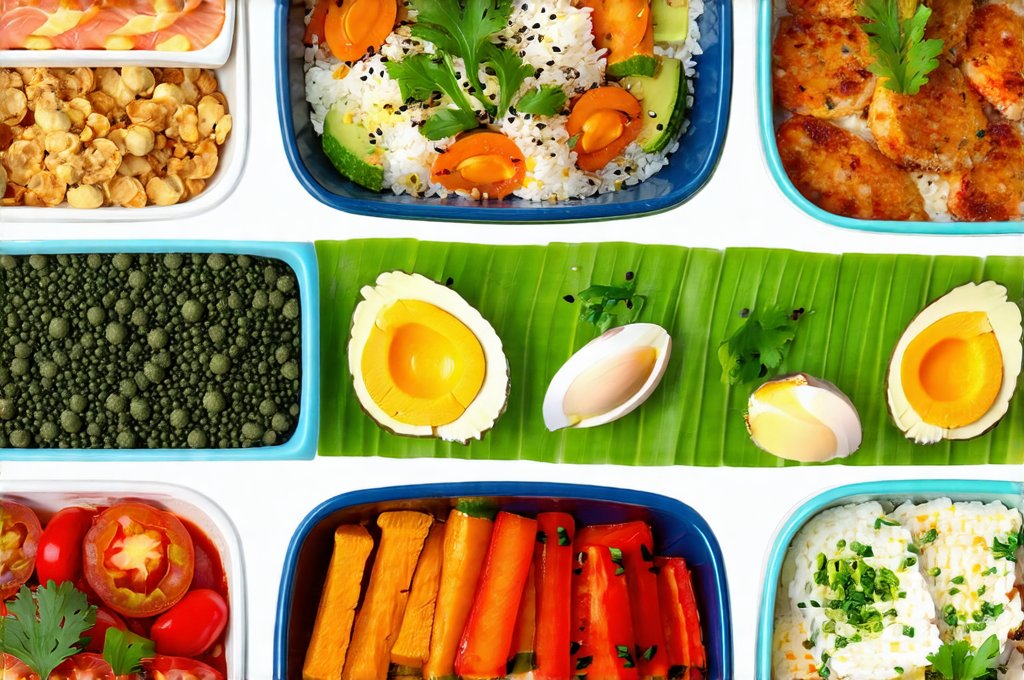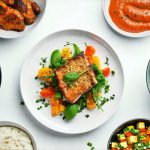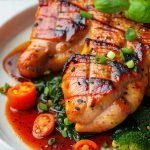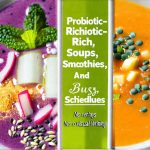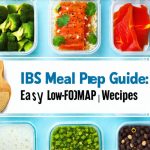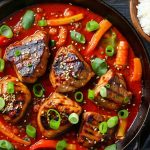Navigating dietary restrictions can often feel overwhelming, especially when life is busy and time for extensive meal preparation is limited. For individuals managing Irritable Bowel Syndrome (IBS) or other digestive sensitivities, the Low-FODMAP diet has become a valuable tool in reducing symptoms. However, adhering to this diet doesn’t necessarily require hours in the kitchen. Many delicious and satisfying meals can be assembled quickly – even without any cooking at all! This article provides practical ideas for building Low-FODMAP meals that are convenient, accessible, and won’t compromise on flavor. We focus on utilizing pre-prepared ingredients and simple combinations to create nourishing options for breakfast, lunch, dinner, and snacks, freeing up your time and energy while supporting your digestive health.
The key to success with a no-cook Low-FODMAP approach lies in strategic planning and understanding which readily available foods naturally fit within the dietary guidelines. Many supermarkets now offer pre-cut vegetables, lactose-free dairy alternatives, and gluten-free breads, making meal assembly significantly easier. Focusing on fresh produce that’s known to be low in FODMAPs – such as carrots, cucumber, spinach, tomatoes, and oranges – alongside safe protein sources like canned tuna or smoked salmon, forms the foundation of these quick meals. It’s also crucial to remember that portion control is important; even Low-FODMAP foods can trigger symptoms if consumed in excessive quantities. This guide emphasizes simple combinations and mindful choices to help you enjoy delicious food without discomfort. Understanding strategies for long-term meal planning can also make things easier.
Quick & Easy Low-FODMAP Meal Building Blocks
Building a meal doesn’t always mean complex recipes. It’s often about combining the right ingredients. Think of your Low-FODMAP diet as a puzzle: each piece (food item) needs to fit within the rules. Start with a protein source – options like canned tuna in springwater, smoked salmon, firm tofu (pre-cubed and drained), or pre-cooked chicken slices are ideal for no-cook meals. Then add a carbohydrate component—gluten-free crackers, rice cakes, quinoa flakes, or even small portions of white rice can work well. Finally, incorporate low-FODMAP vegetables for added nutrients and fiber. A simple example could be gluten-free crackers topped with smoked salmon, sliced cucumber, and a sprinkle of dill. This is quick, flavorful, and adheres to the Low-FODMAP guidelines.
Another helpful strategy is to pre-portion ingredients into containers or bags at the beginning of the week. This saves time during busy weekdays and ensures you always have readily available options. For example, divide canned tuna into individual portions, chop cucumber and carrots into snack-sized sticks, and measure out quinoa flakes for breakfast. Having these components prepared reduces decision fatigue and makes it easier to stick to your dietary plan. Remember to check labels carefully on pre-packaged foods to ensure they don’t contain high-FODMAP ingredients like garlic or onion powder. Always prioritize reading ingredient lists. Meal organization techniques can be a lifesaver when you’re short on time.
Finally, don’t underestimate the power of simple salads. A base of spinach leaves with sliced tomatoes and cucumber, topped with canned tuna and a drizzle of olive oil and lemon juice is a refreshing and satisfying meal that requires no cooking whatsoever. Adding a small portion of lactose-free feta cheese can also enhance the flavor profile without compromising your diet. These kinds of combinations showcase how easy it is to create nutritious Low-FODMAP meals without spending hours in the kitchen. The impact of cooking frequency can also affect digestion, even with no-cook meals.
No-Cook Meal Ideas for Every Time of Day
The versatility of the Low-FODMAP diet extends to all mealtimes. Breakfast can be as simple as lactose-free yogurt with a handful of blueberries and a sprinkle of gluten-free granola. Lunch options include tuna salad (made with mayonnaise that doesn’t contain garlic or onion) on gluten-free bread, alongside carrot sticks and cucumber slices. Dinner could consist of smoked salmon and spinach salad with a drizzle of olive oil and lemon juice, paired with a small portion of white rice. Even snacks can be Low-FODMAP friendly – think orange segments, a handful of walnuts, or lactose-free yogurt.
For those seeking more substantial no-cook meals, consider assembling “bowls” using pre-prepared ingredients. A quinoa bowl could feature cooked quinoa (pre-cooked and available in many supermarkets), sliced cucumber, chopped tomatoes, canned chickpeas (in moderation due to FODMAP content – start with a small portion), and a drizzle of olive oil and lemon juice. Similarly, a rice cake “pizza” can be made by spreading lactose-free cream cheese on a rice cake, topping it with sliced tomatoes and spinach, and sprinkling with herbs. The possibilities are endless when you embrace the convenience of pre-prepared ingredients and simple combinations. Experimenting with different flavors and textures is encouraged! You might also want to explore low-FODMAP food ideas for inspiration.
Low-FODMAP Breakfast Options
Starting the day with a nourishing yet easily prepared breakfast sets a positive tone for your entire day. Lactose-free yogurt, paired with low-FODMAP fruits like blueberries or strawberries, offers a quick and satisfying option. A sprinkle of gluten-free granola adds texture and crunch. Another excellent choice is quinoa flakes, which can be soaked in lactose-free milk overnight to create a creamy, no-cook porridge. You could also opt for a slice of gluten-free toast with a smear of lactose-free cream cheese and a few slices of tomato.
Consider preparing your breakfast the night before – soaking quinoa flakes or assembling yogurt parfaits – to further streamline your morning routine. It’s important to remember that portion sizes matter; even low-FODMAP foods can cause symptoms if consumed in excess. Start with small servings and gradually increase as tolerated. Additionally, always check the ingredient lists on pre-packaged granola or cereals to ensure they don’t contain high-FODMAP ingredients like honey or molasses.
Quick Low-FODMAP Lunch Solutions
Lunch often poses a challenge for those with limited time. Canned tuna salad (made with mayonnaise without garlic or onion) on gluten-free bread is a classic and convenient option. Pair it with carrot sticks, cucumber slices, and a small orange for a balanced meal. Another easy lunch idea involves combining pre-cooked chicken slices with spinach leaves, sliced tomatoes, and a drizzle of olive oil and lemon juice. You can also create a “deconstructed” salad by arranging these ingredients separately in containers – allowing you to assemble it quickly at lunchtime.
Rice cakes topped with lactose-free cream cheese and smoked salmon provide another quick and satisfying option. For added flavor, sprinkle with dill or chives (in moderation). If you’re feeling adventurous, try making a “wrap” using gluten-free tortillas filled with spinach, tuna salad, and cucumber slices. Remember to check the ingredient list on pre-made wraps to avoid high-FODMAP ingredients.
Simple No-Cook Dinner Ideas
Dinner doesn’t have to be complicated to be delicious and nutritious. Smoked salmon paired with a large spinach salad, dressed with olive oil and lemon juice, is a light yet satisfying option. A small portion of white rice can add substance to the meal. Another quick dinner idea involves combining pre-cooked chicken slices with sliced tomatoes, cucumber, and a drizzle of balsamic vinegar (check it’s low FODMAP).
For a slightly more substantial meal, consider assembling a quinoa bowl with canned chickpeas (in moderation), chopped vegetables, and a sprinkle of herbs. Remember to portion control the chickpeas carefully as they can be moderate to high in FODMAPs for some individuals. The goal is to create meals that are both enjoyable and easy to digest – without spending hours in the kitchen. Focus on fresh, whole foods whenever possible. If you’ve had days with no meal planning resulting in soft stools, this can also impact your dinner choices.

